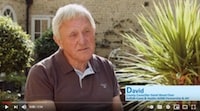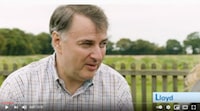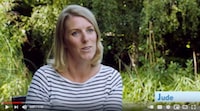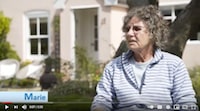Community Impact
Click on an image to hear the voices of local people
Thank you to Nathaniel Walters and John Walker
Indefensible impact on coastal communities
We recognise the impact this is having on the coastal communities which host this infrastructure and will ACT QUICKLY to take the necessary steps to address the situation…. This will consider the full impacts on affected communities, particularly on the east coast of England …”
Energy White Paper ‘Powering Our Net Zero Future
As we have heard from an overwhelming number of residents, who have courageously and passionately spoken at the Examination Hearings, the impact of these Applications upon their community is simply too great.
With Friston set to become an ‘Energy Hub’, both the huge substation site and the cable trenches will be in a permanent state of construction for the next 12-15 years, quite possibly longer if we factor in the next round of projects and decommissioning.
People have chosen to live in the midst of countryside free from the noise, lights and sites of an industrialised landscape. The substation site and cable corridors are at various points no more than 30m from gardens, a Parish Church, a medieval village, a primary school and a care home. The quintessential, rural character of Friston village will be torn asunder. Pilgrims paths will be desecrated. This is not a mitigable or legitimate sacrifice.
It is unconscionable to put down a substation in the heart of a medieval village, where noise, lights and industrial structures destroy well-being and mental health, if better site options exist. There are more suitable locations at industrialised or brownfield sites, where any unmitigable noise pollution, light pollution and air pollution, although present, will not impact on a local community, school children, the elderly and perhaps most importantly the mental health of all who live within metres of this site or who will have their land forcibly acquired. The adverse impacts of the proposed cable route and substations clearly outweigh the benefits, when less damaging alternatives are available.
CULTURAL HERITAGE
The Suffolk Heritage Coast and its priceless value
The “heritage coast” classification system was initiated in 1972 to protect coastlines of special scenic and environmental value from undesirable development.
The Suffolk Heritage Coast is priceless. How can anyone value the rich cultural heritage and forecast exactly what could be lost in terms of tourism revenue if these onshore infrastructure plans go ahead?
Tourism and the road system are inextricably linked. The rural lanes and arterial roads are already dangerously busy at certain times of the year. These energy projects would cause greater traffic congestion and danger to ramblers, cyclists and delays for emergency services. Tourists will choose to go to more attractive places where the roads are less congested.
The ability to pay for the preservation of cultural heritage is partly contingent on guaranteed numbers of leisure visitors. Jobs in hospitality, outdoor activities, festivals and related services are all threatened by the industrialisation of Suffolk Heritage Coast.
What is this area’s cultural heritage?
Aldeburgh was one of Suffolk’s earliest seaside resorts. At the beginning of the nineteenth century visitors began to visit the town to enjoy its clear and healthy air and to sample the excellence of its water. A guide book to the town dated 1820 assures its readers that Aldeburgh “is reckoned by physicians to be one of the most healthy places along the eastern shore..”
Benjamin Britten, a dentist’s son from Lowestoft, made Suffolk the heart of the twentieth-century British musical landscape. Britten is best remembered for his founding of the annual Aldeburgh Festival in 1948 and the creation of the Snape Maltings Concert hall. At the Festival, Britten and his partner Peter Pears brought together international stars and emerging talent from around the world. The 832-seat Snape Maltings hall was opened by the Queen at the start of the twentieth Aldeburgh festival on 2 June 1967. The Maltings continues to host world-class performers under its current management, the Britten Pears Arts, a pioneering music, arts and heritage charity.
Suffolk’s coastline is a main draw for tourists. In the Summer, visitors swarm to charming seaside resorts such as Aldeburgh and Southwold. The coastal paths and nature reserves are a major attraction, headed by the world-famous RSPB reserve of Minsmere. The five estuaries make this region particularly magical for the wildlife and for hiking and canoeing.
Culture plays a large part in twenty-first century Suffolk life. Festivals abound. In Aldeburgh alone, the calendar year is filled with annual festival bookings - Literary, Poetry, Food & Drink, Documentary film, Craft-fairs, Art and Contemporary Music.
Thorpeness was voted the “weirdest village in England” in 2003 by Bizarre magazine. Glencairn Stuart Ogilvie’s dream was to create a fantasy holiday village when he bought up the land north of Aldeburgh in 1910. The buildings have a mock Tudor or Jacobean style. In the centre of the village is a shallow, artificial boating lake that Ogilvie called the Meare, using the Elizabethan spelling. Peter Pan’s author, J.M.Barrie was a friend of Ogilvie and this book was the inspiration for the design of this adventure playground.
The Warden’s Trust building located on the border of Thorpeness is listed in the latest edition of Pevsner as another quirky piece of architecture, now the home to the acclaimed charity for vulnerable children and elderly. The other famous feature of Thorpeness is the House in the Clouds built in 1923 as a water tower and now converted into holiday accommodation.
Coastal Suffolk has been under threat from coastal erosion, flooding and foreign invaders for centuries. The 17 Martello Towers including Slaughden with its unique quatrefoil design, capable of holding four guns, remain an architectural legacy of the Napoleonic Wars and are today mostly converted into holiday accommodation. Orford Ness is not only famous for its bird life and Estuary trails but also for its Cold War history.
Coastal Suffolk is a source of inspiration for artists, writers, composers and poets. WG Sebald, George Crabbe, Esther Freud, Juliet Blaxland, Daniel Horowitz are just a few of the writers and poets who have chosen to live in this area over the last few centuries. Vast skies, rare shingle beaches, fragile shorelines, coralline crag and heathland make this a watery wilderness of beauty and otherness. Artists such as Maggi Hambling have attracted a new type of pilgrim to visit and tourists are keen to view new art exhibitions as well as attending concerts, and walking in the nature reserves.
Cultural and outdoor tourism is this region’s main source of revenue and the future stability and growth of this sector is dependent on the tranquillity, sense of untouched Nature and the lack of development and industrialisation.
Suffolk county is enriched through these contrasting sectors. Suffolk’s natural assets can include wind energy and unspoilt countryside. These two assets should not be in opposition to each other. They should co-exist. Niche tourism should be nurtured alongside the exciting developments for Lowestoft as a centre for renewables. These two Suffolk regions should be developed as two distinct offers.
The sunrise coast symbolises the regeneration of the Waveney valley and its future success is linked to the renewable energy industry.
Lowestoft and the Waveney Valley should become a centre of excellence for research and development in renewables.
That is a very different proposition to the Suffolk Heritage Coast.
There is a risk of commoditisation if these regions are homogenised. 2021 is a tipping point.
Do we have the collective will and determination to find a way forward which is a win/win?
Air Quality, Health & Social Impact
- SEAS Final Submission on Air Quality by Redmore Environmental
- Ammonia emissions on Leiston-Aldeburgh SSSI and Sandlings SPA, SEAS Deadline 11 Submission
- Health and wellbeing, SEAS Deadline 8 Submission
- Air quality, SEAS Deadline 8 Submission
- Health impact assessment, SEAS Deadline 5 Submission
- Air Quality, SEAS Deadline 5 Submission
Traffic, Tourism and Economic Impact
- SEAS Submission on the Adverse Impacts on Tourism, Deadline 13 5 July 2021
- SEAS Response to the Applicant’s reply to Roads/Traffic and Tourism REP9-014 & REP6-064, 5 July 2021
- Roads, Traffic and Tourism, SEAS Deadline 8 Submission
- Roads, Traffic and Tourism, SEAS Deadline 5 Submission
- Roads, Traffic and Tourism, SEAS Deadline 5 Submission
- Roads, Traffic and Tourism, SEAS Deadline 2 Submission
- Roads, Traffic and Tourism, SEAS Deadline 1 Submission
Biodiversity
SEAS Biodiversity Submissions to the Examination
- Habitats and Biodiversity, SEAS Deadline 13
- Habitats and Biodiversity, SEAS Deadline 12
- Habitats and Biodiversity, SEAS Deadline 11 Submission, Appendix 3 Video, Appendix 4 Video, Appendix 5 Video
- BEIS Review of Consents for Major Infrastructure Projects and Special Protection Areas, SEAS Deadline 11 Submission
- Serious deficiencies in the 2018 Surveys, SEAS Deadline 9 Submission
- A request for ExA to instruct the Applicant to carry out fully independent surveys by fully qualified and chartered ecologists before the end of the examination, SEAS Deadline 9 Submission
- The case against open trenching of the River Hundred, SEAS Deadline 8 Submission
- The quality of biodiversity surveys, SEAS Deadline 8 Submission
- Nightjar and woodlark of the Sandlings spa, River Hundred Crossing, SEAS Deadline 8 Submission
- River Hundred woodland, SEAS Deadline 8 Submission
- Terrestrial ecology, SEAS Deadline 6 Submission
- River Hundred's riparian woodland, SEAS Deadline 6 Submission
- Incompleteness and inaccuracy of the Applicant's survey re: River Hundred and its riparian environment, SEAS Deadline 5 Submission
- Broadleaved woodland and microtunneling, SEAS Deadline 3 Submission
- Habitats and Biodiversity, SEAS Deadline 2 Submission
Thoughts on the Suffolk Sandlings ... by a local resident
Key Documents
The Economics of Biodiversity: The Dasgupta Review – Government Response, HM Treasury, 14 June 2021
The Dasgupta Report, Final Report of the Independent Review on the Economics of Biodiversity led by Professor Sir Partha Dasgupta, 2 February 2021
‘Powering Our Net Zero Future: Energy White Paper’, Energy White Paper, HM Government, Dec 2020
The 10 Point Plan for a Green Industrial Revolution, HM Government, November 2020
In the Press
Can Offshore Wind Development Avoid Harming Nature? Greentechmedia, 11 January 2021
Big UK offshore windfarms push risks harming habitats, say campaigners, The Guardian, 14 November 2020
18 Environmental Groups write to the PM, Wildlife and Countryside Link, 13 November 2020
Cumulative Impact - SEAS Submissions into the EA1N/2 Examination
- SEAS Submission Final Submission Re: Cumulative Impact, 6 October 2021
- SEAS Supplementary Submission on Cumulative Impact Deadline 13 – 5 July 2021
- Cumulative Impact, Evidence from National Grid, SEAS Deadline 11 Submission
- Cumulative Impact, SEAS Deadline 9 Submission
- Cumulative impact, SEAS Deadline 8 Submission
- Norfolk Vanguard and cumulative impact, SEAS Deadline 6 Submission
- Cumulative Impact, SEAS Deadline 5 and Deadline 1 Submission
- Cumulative Impact, SEAS Deadline 4 Submission
- Cumulative impact, SEAS Deadline 3 Submission
- Cumulative impact, SEAS Deadline 2 Submission
- NGESO and NGETS, Deadline 2 Submission
Campaign With Us
We are asking you to write, to the Secretary of State for the Department of Energy Security and Net Zero (DESNZ), see full details HERE
The Wardens Trust (providing recreational and holiday facilities for people with disabilities, the elderly and their carers) is situated on the cliffs between Thorpeness and Sizewell in a secluded site with direct access to the beach and 2 camping areas. Nearby there are wonderful walks over the heaths and along the beach on the Heritage coastline. The current proposals to bring cables so close to their site is an existential threat to this amazing charity.



























